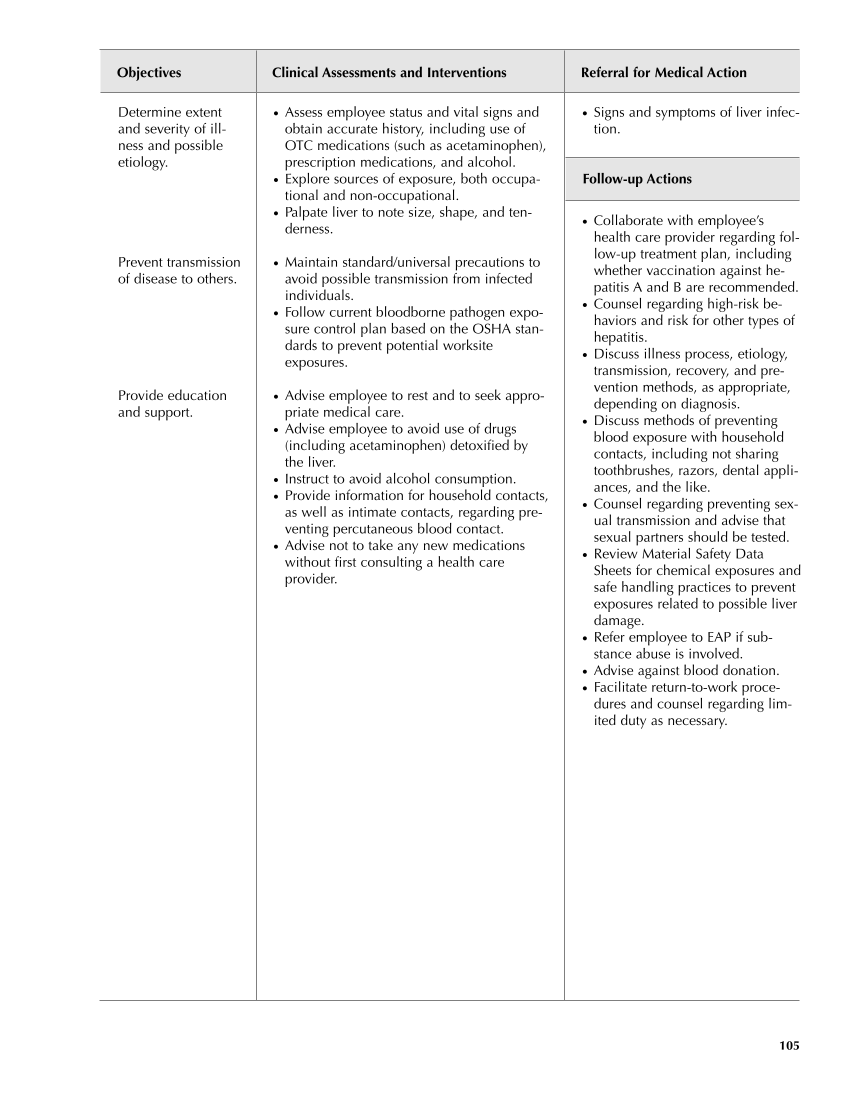● Signs and symptoms of liver infec- tion. Follow-up Actions ● Collaborate with employee’s health care provider regarding fol- low-up treatment plan, including whether vaccination against he- patitis A and B are recommended. ● Counsel regarding high-risk be- haviors and risk for other types of hepatitis. ● Discuss illness process, etiology, transmission, recovery, and pre- vention methods, as appropriate, depending on diagnosis. ● Discuss methods of preventing blood exposure with household contacts, including not sharing toothbrushes, razors, dental appli- ances, and the like. ● Counsel regarding preventing sex- ual transmission and advise that sexual partners should be tested. ● Review Material Safety Data Sheets for chemical exposures and safe handling practices to prevent exposures related to possible liver damage. ● Refer employee to EAP if sub- stance abuse is involved. ● Advise against blood donation. ● Facilitate return-to-work proce- dures and counsel regarding lim- ited duty as necessary. Objectives Clinical Assessments and Interventions Referral for Medical Action 105 Determine extent and severity of ill- ness and possible etiology. Prevent transmission of disease to others. Provide education and support. ● Assess employee status and vital signs and obtain accurate history, including use of OTC medications (such as acetaminophen), prescription medications, and alcohol. ● Explore sources of exposure, both occupa- tional and non-occupational. ● Palpate liver to note size, shape, and ten- derness. ● Maintain standard/universal precautions to avoid possible transmission from infected individuals. ● Follow current bloodborne pathogen expo- sure control plan based on the OSHA stan- dards to prevent potential worksite exposures. ● Advise employee to rest and to seek appro- priate medical care. ● Advise employee to avoid use of drugs (including acetaminophen) detoxified by the liver. ● Instruct to avoid alcohol consumption. ● Provide information for household contacts, as well as intimate contacts, regarding pre- venting percutaneous blood contact. ● Advise not to take any new medications without first consulting a health care provider.
Purchased from OEM Press by (ge corporate access). (C) 2013 OEM Health Information, Inc. All rights reserved.












































































































































































































































































































































































































































